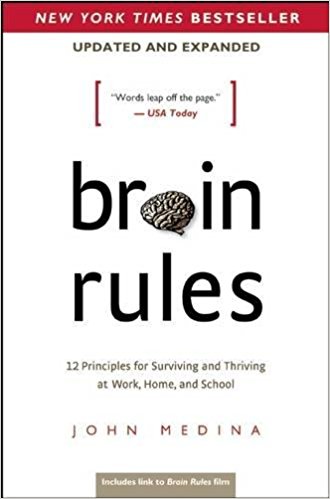 Overview
Overview
3 Key Points
- How researchers understand your brain;
- How you can help your brain perform better; and
- How schools and workplaces could improve performance and productivity by taking brain research into account.
Take-Aways
- Your brain may look like a big, soft walnut, but it’s really a beehive of activity.
- Your brain believes you are still fighting for survival against a saber-toothed tiger.
- Knowing 12 rules about brain function can help you learn better and stay smarter.
- Your brain evolved to need exploration and exercise. You are capable of remaining able to learn forever, but physical activity is crucial.
- No two brains are alike. Male and female brains are distinctly different.
- People cannot give full attention to dull information.
- To recall data short-term, “repeat to remember”; to recall it long-term, “remember to repeat.”
- To be your smartest, sleep well and regularly.
- Your brain needs information from all your senses, but vision is king.
- A child’s brain doesn’t function at its best in a conventional classroom trapped in rote learning. Children learn better in a home that is emotionally stable.
Summary
Your Brain Is Complex and Amazing
Researchers are using brain scans and other techniques to learn more and more about how the human brain works. Although more is left to discover, 12 basic “rules” capture much of what science knows about the amazing computing device in your head.
1. “Exercise” – Your Brain Slows Down When You Sit Still
Physical activity is vital to keep your body and mind working well. Retired television exercise guru Jack La Lanne is a great example. For his 70th birthday, he swam across California's Long Beach Harbor pulling 70 boats with passengers onboard. His history of exercising and eating well contributed to his perennially quick wit and agile humor.
“My goal is to introduce you to 12 things we know about how the brain works.”
Anthropologists note that the first humans covered dozens of miles a day seeking food, so their brains evolved to handle regular physical activity. Because our brains “were forged in the furnace of physical activity,” if you want to use your entire IQ you must exercise. Couch potatoes lose mental facilities and physical capabilities. To regain your mental abilities, get aerobic exercise, even if you have neglected yourself. Just walking half an hour a few times a week will boost your cognitive output and reduce your risk of dementia.Children who find concentrating difficult will benefit from physical activity. Exercise makes oxygen flow more efficiently through the blood and into the cells, cleaning up toxic wastes left behind by food metabolism. When you move you're keeping your brain cells healthy. More than food or water, your brain, which consumes 20% of your body’s energy, requires oxygen to function. Exercise also makes your mental engine run cleanly. Unfortunately, modern civilization requires people to sit for long periods without moving. If schools and offices incorporated physical activity, students and staffers would get smarter, healthier and more productive.
“The need for explanation is so powerfully stitched into babies’ experiences that some scientists describe it as a drive, just as hunger and thirst and sex are drives.”
2. “Survival” – Your Brain Is an Evolutionary Triumph
The human species is weak, but brainpower helped people survive and thrive. Your brain has three parts where many survival and learning tools are hardwired: a “lizard brain” or amygdala, a “mammalian brain” and the cortex for higher reasoning. Humans have a great capacity to adapt. Over thousands of years, thanks to their powerful brains, people adjusted to changes in climate and food supply, and came to dominate the planet. Their advanced brains also allow them to “read” each other and negotiate. Your brain’s memory is an informational “database,” and you use mental “software” to improvise and solve problems. You may perform best with encouragement and be unable to perform as well near someone who threatens you. Your primitive lizard brain is always watching out for your safety.
3. “Wiring” – Brains Are “Wired” Individually
Nerve cells, known as neurons, look a bit like fried eggs that have been stepped on. The yolk holds important genetic coding. The long tentacle-shaped edges transmit and receive electrochemical messages at blinding speed. This is the cellular basis of learning. The brain’s neural connections are in constant flux. Your specific brain structure depends on your culture and other external inputs. A musician' brain has different cellular “wiring” than a scuba diver’s. As children grow, so do their brains. Key brain growth occurs up until the early 20s and changes can continue for decades. Many researchers have worked to understand intelligence and to map how the brain functions. Some believe there are multiple types of IQ. One person might be great at math while another excels at physical movement. Different parts of the brain are activated for different memories and skills, so your brain scan looks different than anyone else’s, even your twin’s. Since each brain is individual, educational programs should be customizable.
“Easily the most sophisticated information-transfer system on Earth, your brain is fully capable of taking the little black squiggles on this piece of bleached wood and deriving meaning from them.”
4. “Attention” – If It's Not Intriguing, Your Brain Isn't Interested
When you find something boring, you don't pay close attention and you can’t retain the content – so when you're giving a presentation, capture the audience’s interest as soon as you can. You want your audience to focus. Multitasking is a recipe for inefficiency and danger. In fact, multitaskers are prone to 50% more errors and take 50% longer to finish a task than people who do one thing at a time. Studies say that chatting on your cell phone while you're behind the wheel of an automobile is as dangerous as driving under the influence of alcohol.People remember emotional situations longer than calm ones for neurochemical reasons. During emotional events, your brain releases a neurotransmitter called dopamine, which is associated with attention and rewards; it helps you cement the memories. At stressful moments, the brain doesn't pick up details. It focuses on the big picture. If you're trying to teach someone, present “the key ideas and, in a hierarchical fashion, form the details around these larger notions.” Provide information in 10-minute chunks and use entertaining hooks between those chunks.
“To accomplish this miracle, your brain sends jolts of electricity cracking through hundreds of miles of wires composed of brain cells so small that thousands...fit into the period at the end of this sentence.”
Researchers who study stroke victims have found that the left side of the brain can only pay attention to visual stimuli on the right, but the right side takes in the entire visual field. So a stroke patient will recover better if the stroke occurs in the left hemisphere of the brain.
5. “Short-term Memory” – The Case for Connection
When you can recall a piece of information immediately, it is stored in your short-term or “working” memory. To make a memory last longer, repeat it and link it to something familiar. For instance, students forget 90% of a classroom lesson in less than a month, but going over the material at regular intervals and associating one piece of data with another will improve their retention rates. Information in a list of unrelated items is harder to recall than material with meaningful connections to something familiar. Thus, people learn better when they can refer to familiar examples. To be more memorable, engage your listeners’ elaborately and substantively.
“You accomplish all this in less time than it takes to blink. Indeed, you have just done it. Yet most of us have no idea how our brain works.”
6. “Long-term Memory” – The Case for Repetition
Sound and images enhance short-term memory, but you won’t retain information in your long-term memory without a stabilizing process called “consolidation,” and subsequent recall and repetition, or “reconsolidation.” Stored memories are more malleable than you might expect. Today’s fresh memories can fade after a few years, forcing your brain to struggle to recall the specifics of events that once were clear.Studies show that “the brain might cheerily insert false information to make a coherent story.” This has disturbing implications for the value of witnesses in a court of law, among other things. If you want to retain something, be deliberate. For example, ignoring your homework and then studying all night before a test is counterproductive. You will do better by spacing out multiple study sessions.
“Some schools and workplaces emphasize a stable, rote-learned database. They ignore the improvisatory instincts drilled into us for millions of years. Creativity suffers.”
To retain specific information, you need to:
- Think about the information within the first hour or so after you learn it.
- Immediately speak to other people about it in great detail.
- Have a good night’s sleep and “rehearse” the information again afterward.
“We started our evolutionary journey on an unfamiliar horizontal plane with the words ‘Eat me. I’m prey’ taped to the back of our evolutionary butts.”
7. “Sleep” – Snooze or Lose
The human body increasingly malfunctions when deprived of sleep. If you are sleepless for a few days, in addition to severe fatigue, you will experience stomach upsets, crankiness, poor memory recall, disorientation, and eventually paranoia and hallucinations. For about 80% of the time you spend asleep, your brain doesn’t really rest. Brain scans show enormous electrical activity among the neurons, even more than when you are awake. The body has a delicate control process, called the circadian cycle, which keeps you alternating between wakefulness and sleep periods.An individual’s preferred sleep timeframe varies genetically:
“Knowing where to find fruit in the jungle is cognitive child’s play compared with predicting and manipulating other people within a group setting.”
- Early birds (called “larks” and “early chronotypes” by scientists) make up about 10% of the population.
- Another 20% of people are late nighters (called “owls” and “late chronotypes”).
- Everyone else falls midrange on the continuum.
Your brain slows in the afternoon, but a nap can work wonders. Napping for 45 minutes will turbo-charge your brain for six hours. Conversely, students who skip even an hour of sleep each night face a dramatic drop in academic performance. Sleep deprivation impairs “attention, executive function, immediate memory, working memory, mood, quantitative skills, logical reasoning ability, general math knowledge.” Wouldn’t it be great to match job schedules with people’s inherent sleep patterns? Plus, a later school day would address teenagers’ normal tendency to sleep late.
“The body seems to be clamoring to get back to its hyperactive Serengeti roots. Any nod toward this history, be it ever so small, is met with a cognitive war whoop.”
8. “Stress” – Chronic Tension Makes It Harder to Learn
A little bit of stress heightens your ability to learn, but ongoing, chronic stress damages brain function. Chronic stress can cause a phenomenon called “learned helplessness,” in which people simply give up hope and no longer engage their brains or try to solve problems.During times of stress, people experience a “fight or flight response.” The resulting blood pressure rise and racing pulse are detrimental over the long term, raising the risk of strokes and heart attacks. Chronic stress worsens your ability to work with numbers and language. When you are seriously stressed, you don’t learn as well and have difficulty concentrating, remembering and solving problems. Chronic stress can lead to acute depression.
“When couch potatoes are enrolled in an aerobic exercise program, all kinds of mental abilities begin to come back online.”
One kind of stress has serious implications for children: Kids who live in homes where parents fight constantly “have more difficulty regulating their emotions, soothing themselves, focusing their attention on others,” and are more often absent from school. Their ability to learn, study and remember is so diminished that their test scores drop. A program called “Bringing Baby Home,” by researcher John Gottman, Ph.D., teaches fresh marital communication skills to expectant couples. As a result, their newborns have healthier brain chemistry than infants who live with fighting parents.
9. “Sensory Integration” – For Best Results, Use All Your Senses
Your brain gets crucial sensory input from your eyes, ears, nose and skin. For enhanced learning, bring all your senses into play. For example, you will retain more of what you read when pictures accompany the text. The more inputs your brain has to work with, the better you will learn and recall information.
“Our schools are designed so that most real learning has to occur at home. This would be funny if it weren’t so harmful.”
You also remember things better if you first encounter them in the presence of distinctive sensory clues, like smells or sounds. That’s why Starbucks doesn’t want its employees to wear perfume, because it could conflict with the aroma of coffee in the stores.
10. “Vision” – The Eyes Have It
Expert wine testers can be fooled, and made to ignore their sense of taste and smell, if you change the color of wine they are testing. This illustrates how the brain prioritizes the sense of sight. The human vision-processing system is highly complex, and when the brain encounters blind spots it actually interpolates the visual field. Reading is a complex mental activity, because the brain processes each letter as an individual visual symbol.
“Blame it on the fact that brain scientists rarely have a conversation with teachers and business professionals.”
11. “Gender” – Your Sex Affects Your Brain
Scientists find subtle anatomical and functional differences between male and female brains. For example, women synthesize the feel-good neurotransmitter, serotonin, more slowly than men. The genders respond somewhat differently to acute stress: Women often assume a caring role, while men isolate themselves. However, no given individual necessarily conforms to group statistics.
12. “Exploration” – A Sense of Wonder Promotes Learning
As infants become toddlers, they act like little scientists, constantly examining their environment, and testing cause and effect. Their brains are busy gaining data and concepts to help them navigate their circumstances. The adult brain remains flexible and plastic. People are able to learn throughout their life spans.
About the Author
John J. Medina directs the Brain Center for Applied Learning Research at Seattle Pacific University and teaches in the Department of Bioengineering at the University of Washington School of Medicine.
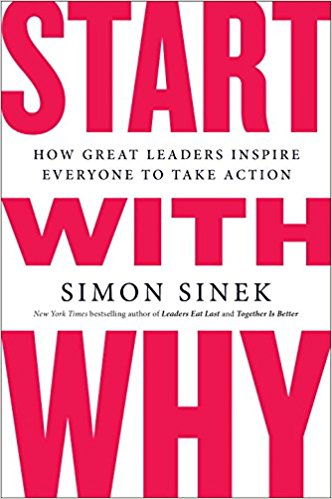 Overview
Overview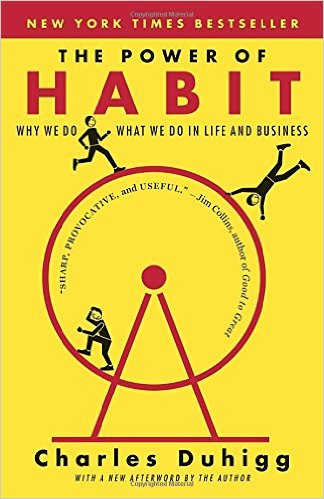 Overview
Overview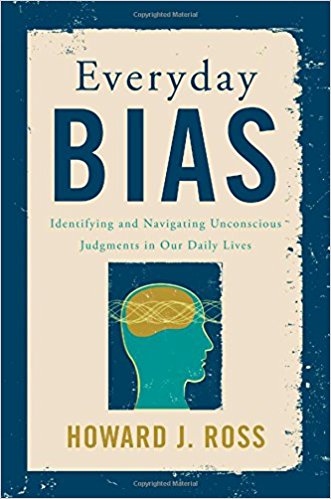 Overview
Overview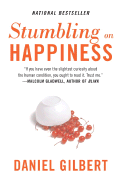 Overview
Overview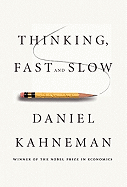 Overview
Overview


